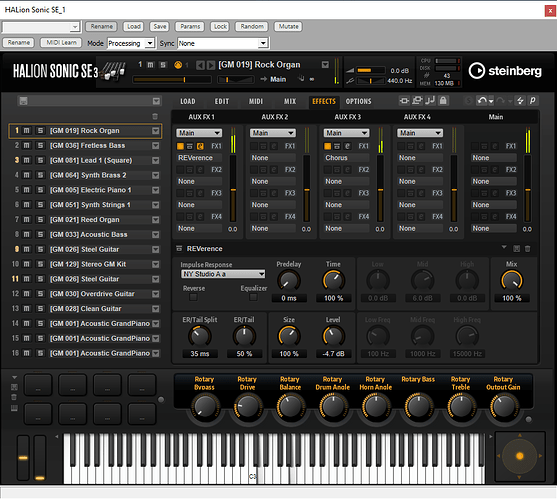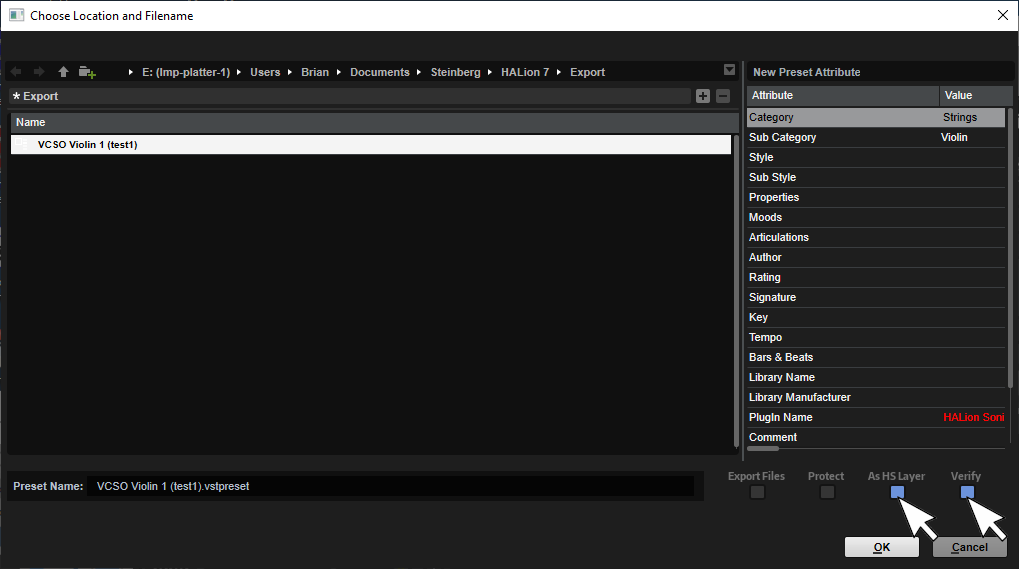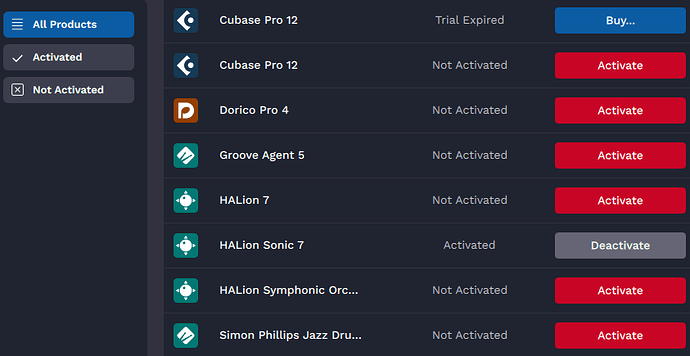I’m not sure if this means much but I just tried the following:
I have a full installation of H7 here…
I opened Steinberg Activation Manager and disabled my full H7 key.
I enabled a free HALion Sonic 7 key of which I obtained from the official Sonic Download link.
I started a fresh instance of Sonic 7 in a non Steinberg host (Bidule).
I can see REVerence as an option in the aux FX rack. It seems to be working perfectly.
For what it’s worth, I also loaded a VST2 instance of the older Sonic SE 3.5.10 player. REverence is here and working.
Yes and no. At least from my personal perspective.
In my early experiences thus far, exporting presets from H7 that are compatible with Sonic 7 is easier and less confusing than ever before. Right click a layer in the Program Tree, choose ‘export as VST3preset’, and tick a couple of boxes.
With ‘verify’ enabled…If your layer isn’t set up properly to support Sonic, you’ll get prompts of what is wrong/missing. Examples: Missing flex phaser in parent layer. Voice manager not enabled (where you pick max level of polophony). Missing output bus at parent level. No Marco Editor. Etc.
In some cases it’ll even offer to do the ‘fix’ automatically for you (don’t forget to save a copy of your initial working program if you want to keep those changes there)!

Don’t forget to ‘import’ your new sonic compatible results back in or they’ll never show up in your Media Bay (though you can manually drag it from an OS explorer window into HALion if you’re not ready to import it into the db).
If you want to turn said ‘layers’ into ‘programs’ for Sonic, you’ll need to load the layers into Sonic first, make whatever control tweaks you desire the program to have as a default state when loaded, and then save them as programs from there. After you’ve done that, you can go back to H7 to ‘pack vstsound libraries’ that include the Sonic ‘programs’.
Do you still need to support VST2?
Sonic 7 doesn’t come in a VST2 format.
Some hosts out there with considerable sized user-bases (Sibelius and Finale) still do not support VST3. I don’t know too much about the Apple versions, but some ‘quick and untested research’ leads me to assume that Apple users might have an option to use the AU version of Sonic 7 (and get native support for Apple silicon) in those hosts, but Windows users are in a bit of a pickle.
People with such hosts might could use virtual MIDI ports (such as loopMIDI) to get free Sonic working in stand alone mode, but they’d have to mix it independently of whatever might be going on with internally hosted instruments.
It might be possible to get a free VST2>VST3 bridge going in such hosts with something like Kushview Element? I personally use Bidule, but the VST3 version of Bidule is still in preliminary stages of development and ‘not free’.
Windows users needing a free player in VST2 format could still grab HALion SE 3.5.10 to get a version that works in a VST2 host. You can’t get free HSSE keys for the old eLicenser anymore, but I’m assuming that a Free Sonic 7, or a free Dorico SE key on the newer dongle free Activation system will unlock the SE 3.5.10 player (as that used to ship with the first ‘dongle free’ downloads of Cubase/Nuendo 12 and Dorico 4).
It’s possible to have a setup with both Sonic 7 and HSSE 3.5.10 working at the same time. Personally, I did not uninstall HSSE 3. Instead I left it installed, but ‘moved’ the VST3 version of HSSE out of the system VST3 directory, but I do keep the VST2 version in a place such hosts can still find and use it. Why do I move the vst3 plugin for HSSE 3? Having both Sonic 7, and HSSE 3 in the VST3 directory isn’t a problem with the latest Steinberg hosts, but it can be confusing to other hosts. Note, I do need to move it back if I want to use HSSE standalone for some odd reason.
I think apple users with Apple Silicon ‘might’ need Rosetta to use the VST2 version of HSSE 3.5.10, meanwhile, I ‘think’ the VST3 version supports Apple Silicon natively. Hopefully they don’t need HSSE at all though, and could simply opt for the AU variant of Sonic 7 in hosts like Finale and Sibelius instead.
As far as I can tell thus far, if you want to make content that works in the older SE 3 player (or older), then you’ll need to roll back to H6 to build those presets. I could be wrong on this, but I’ve not yet found a way around it. I see no obvious way to export ‘Sonic SE’ compatible presets.
If you have a dongle or soft eLicenser with the H6 key (or Updated to H7) on it, rolling back is quite easy. Just uninstall H7 and install H6. (Just the main apps and plugins. You don’t need to change anything in terms of the content libraries).
Naturally you won’t be able to build sounds that use the new H7 synth zones and features for the old HSSE player. So keep that in mind if some of your target users for your sounds are still ‘stuck in VST2’ world.
If you’re brand new to H7 and don’t have a dongle, and never did, I’m not sure what to do. I’d say check your MySteniberg account to see if there is a way to get an H7 key in your old Steinberg soft eLicenser. If not…file a support ticket explaining why you need to ‘roll back’ to older versions, and see if they will set you up with a way to get a key on your soft eLicenser.
![]()
![]()





